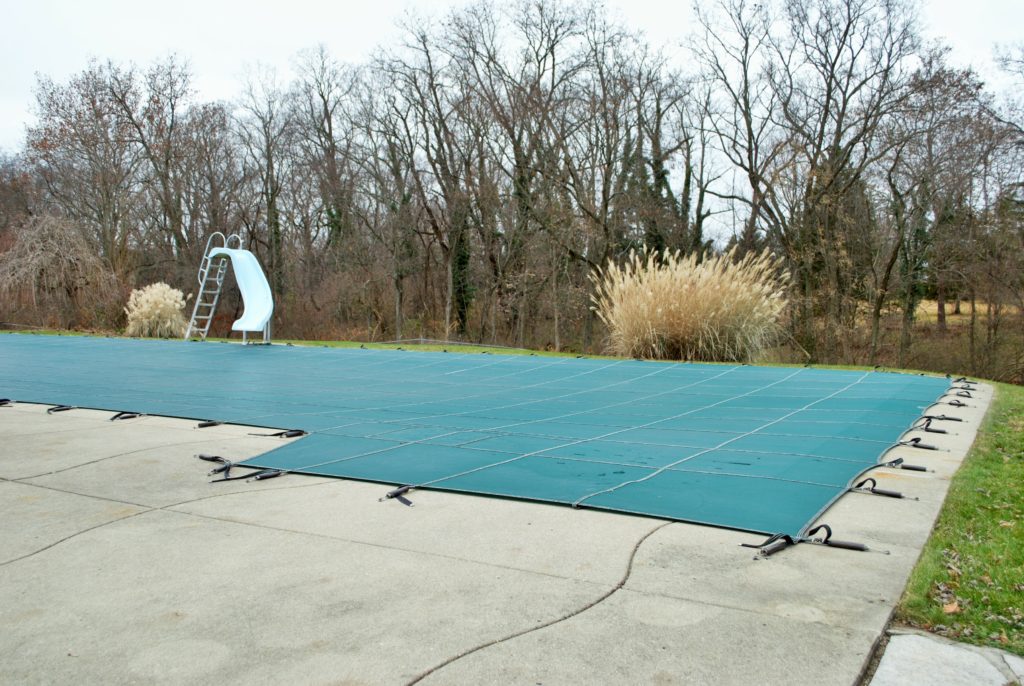22 Sep Winterize your Home on Long Island
It’s crazy to think that this year is already approaching its end. This part of the year is very busy for many, with kids going back to school and leaves falling on the ground. In the blink of an eye, the holiday season will be here and we will be back into the wintertime. It’s important that homeowners now begin to think about winterizing their home.
The reason it’s so important to prepare your home for winter is because neglecting to do so can cause damage to your home, and in some cases cause discomfort for your family. Therefore it is better to put a little work in now, than to be dealing with a nightmare in the dead of winter. Here are some ways you can winterize your home.

Winterize Your Pool
If you own a pool, then winterizing it is crucial. There is an important process that needs to be done which involves deep cleaning, lowering the water levels, using the right chemicals and covering it efficiently. For a full in depth step-by-step process on how to winterize your pool, read here.
Check the gutters
Prevent ice dams by cleaning out your gutters, installing gutter guards (if feasible) and making sure the attic floor is properly insulated. The attic itself should be well-ventilated and about 10 degrees warmer than outside.
Protect pipes from freezing
Protect against frozen pipes by insulating those that could be susceptible to freezing. When the forecast calls for severe temperature drops, keep a stream of water running in a few faucets to guard against freezing and bursting.
Additionally, remove all attached garden hoses, drain them and store them away. Shut off the valves and insulate the faucet. Neglecting to do so could cause your hoses to freeze and become defective.
Fire Safety
You should have smoke and carbon monoxide detectors generously throughout your house, and replace their batteries every year. Test them monthly and make sure your family is aware of what to do in the case of a fire, complete with an escape plan and meeting location. Additionally, have a strategically placed fire extinguisher, preferably having one on every floor and near the kitchen if possible.
Prevent tripping hazards
In New York State, property owners are obligated to clear their property of hazardous snow and ice in a reasonable amount of time. Driveways, entryways, parking lots, steps, and ramps should be cleared in a reasonable amount of time to ensure safety for any pedestrians that are on the premises. Keep driveways and sidewalks clear of ice and snow and repair any issues with steps and handrails.
Have heating checked
If you have a wood burning stove, it’s very important to have your chimney inspected every year and the stove itself twice a month. If you have a water heater, make sure that is inspected annually. Really, any vents should be examined and insured that they are not obstructed.
Caulk around holes and openings to help prevent cold air from seeping in. Install weather stripping and seals around openings such as windows, doors, air conditioners and mail chutes.
Clear the yard
Keep the trees trimmed and remove dead branches and debris from your yard. Ice, snow and wind can weaken trees and cause branches to fall and potentially damage your home, car or even yourself and others.
Car Safety
The first thing you will want to do is check the tires. Tires will get damaged as you drive along the road. With Long Island’s winters and unforgiving potholes, this can be especially true. Tires should have a clear pattern of “treads” which provide traction on the road. Over time, those treads can wear down and go “bald”, meaning the tires won’t grip the roads as well. This can be especially concerning to have during winter weather. You will also want to check the tire pressure. Following that, examine your car’s lights. Turn the headlights on and check to see if they are cloudy or dim. Turn your blinkers on and see if they are blinking fast (indicating the light will soon go). Then have someone check the back of your car while you carefully turn on your brake lights.
From there you want to check your battery seasonally. The first sign of a wearing battery is when the car struggles to start. Another sign could be the windows lagging when trying to adjust them. If you look under the hood, try to notice if there is any corrosion on the battery. Making sure your battery is healthy will prevent the possibility of being stranded on the road.

About the Author
Steven Palermo is the managing partner for Palermo Law, Long Island’s Personal Injury Law Firm. He has been helping people receive compensation for their injuries for over 21 years. He focuses on cases involving car accidents, truck accidents, construction accidents and slip and fall injuries.
His book The Ultimate Guide to Handling New York Car Accident Claims details the ins and outs of a car accident claim in a simple, easy-to-read manner.

